December 2018
Not Gone With The Wind: How to Design Rooftop Spaces
Read more
You’ve found the perfect patterned fabric for your design project, but you need to ensure you order enough fabric to cover your furniture pieces, with the pattern matched in a way that’s aesthetically pleasing (usually at the seams). The manufacturer of the furniture piece will provide data on the quantity of solid color fabric that is needed to upholster that piece. But if you’re considering using a patterned fabric to upholster with, it’s really important you know size of its pattern repeat. You’ll need this in order to accurately calculate the additional yardage needed for a perfectly upholstered piece.
Pattern repeats—the distance between starting points of the pattern, or where the pattern begins and then begins again—are measured by their horizontal and vertical dimensions. The textile supplier will provide this information. But they won’t tell you how much you need for a given project. Whether you’re selecting fabrics for restaurant furniture, commercial furniture, or residential seating, it’s crucial to know how much extra fabric you’ll need than if you were using a solid color fabric.
To calculate yardage requirements on patterned fabric, add the horizontal and vertical measurements together, then add in an additional percentage, based on those measurements. Using this formula, you can calculate your fabric needs by hand for each project. Or your can use the table below as a handy cheat sheet for determining the percentage your pattern repeat falls into.

Let’s look at a couple examples, using an armchair as our reference.
Using plain fabric, you would need 9 yards of plain fabric at a 54” width (54inW) to upholster the chair.
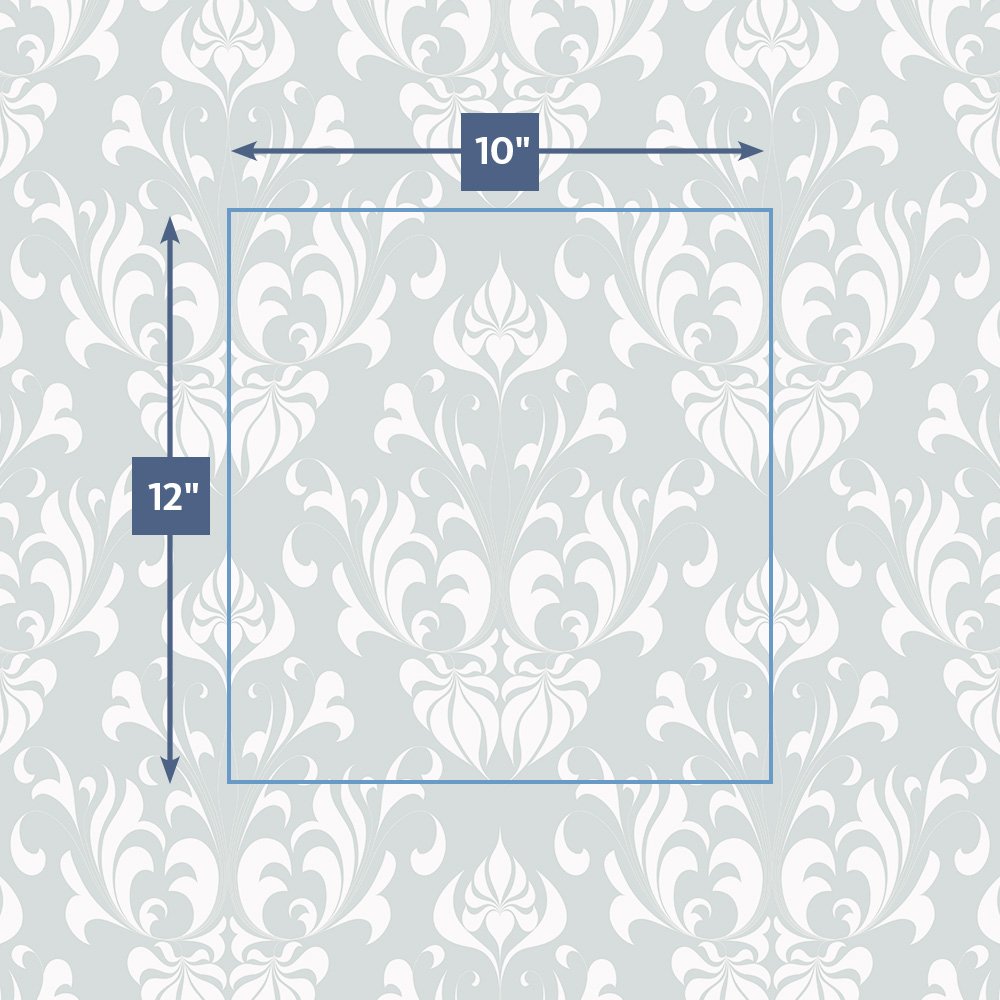
Instead of a plain fabric, you’ve chosen an ikat pattern, 54inW, that repeats every 12 inches vertically and every 10 inches horizontally.
12 + 10 = 22 inches
Per the chart above, you need to order an additional 20% of fabric—or 1.8 yards—so that the pattern matches correctly. Since 9 yards of nonpatterned fabric is needed to upholster this armchair, you’ll order a minimum of 10.8 yards of patterned fabric for the project.
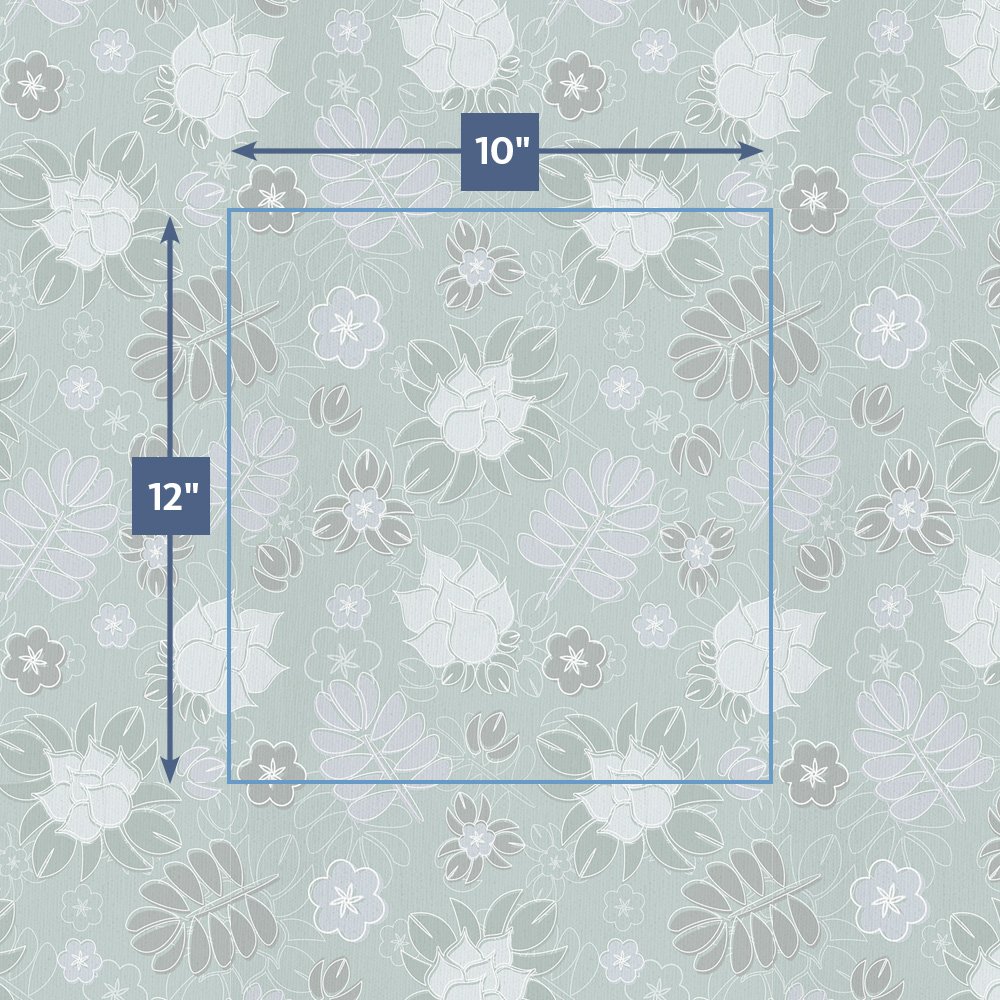
For this version, you’ve chosen a large floral pattern, 50inW. The pattern repeats every 12 inches vertically and every 10 inches horizontally. Add the two measurements together.
12 + 10 = 22 inches
Per the chart above, you need to order an extra 30% of fabric, to account for both the pattern repeat and the shorter roll height — 2.7 additional yards. This brings you to a total of 11.7 yards of fabric.
When using COM fabric, keep in mind that the speed and accuracy of cutting machinery isn’t perfectly accurate. Textile suppliers allow themselves variances when cutting yardage—typically +/- 10%. Always round up to the nearest full yard and order one additional yard than you think you’ll need. In Example 2, for instance, you would round up to 12 yards (from 11.7), then tack on an additional 1 yard, for a total of 13 yards.
Though they might seem similar, pattern direction and fabric direction are two different animals.
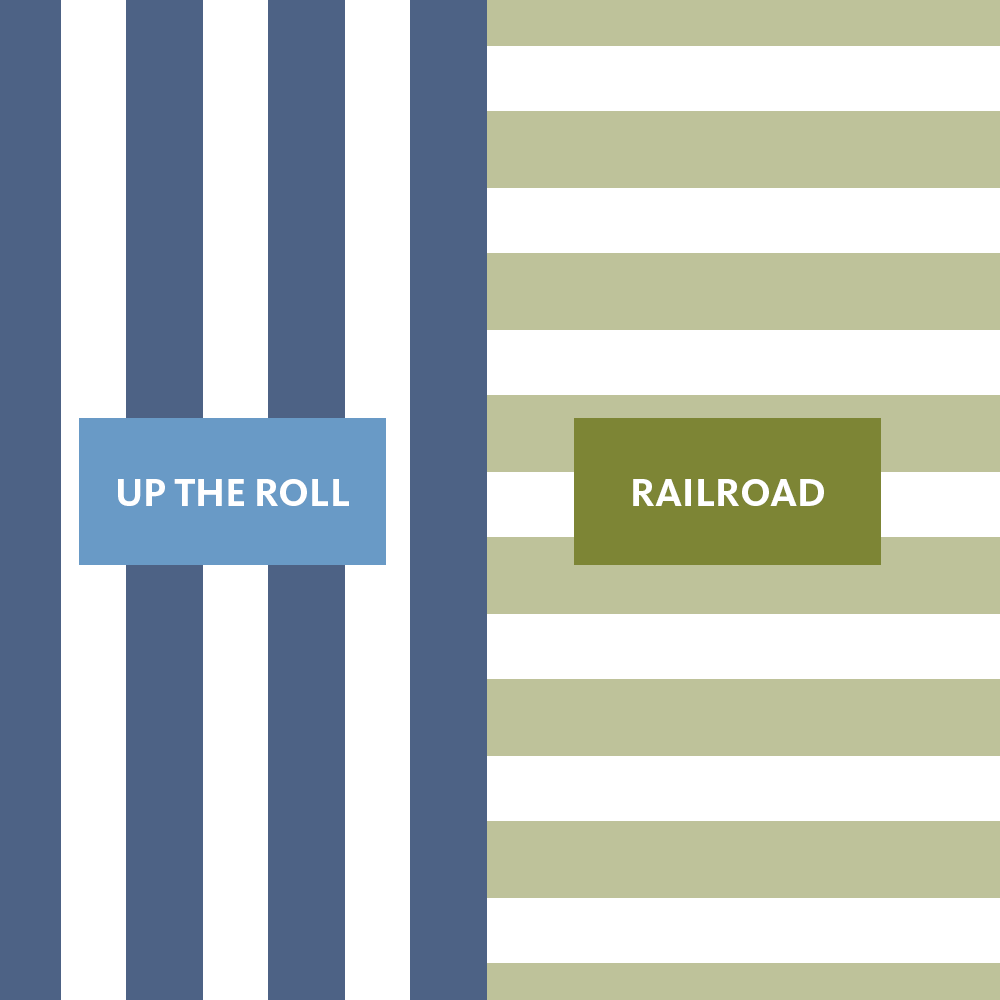
Patterned fabric can be milled in two ways:
Up the Roll (UTR): The pattern runs up the length of the roll
Railroad (RR): The pattern is milled across the roll.
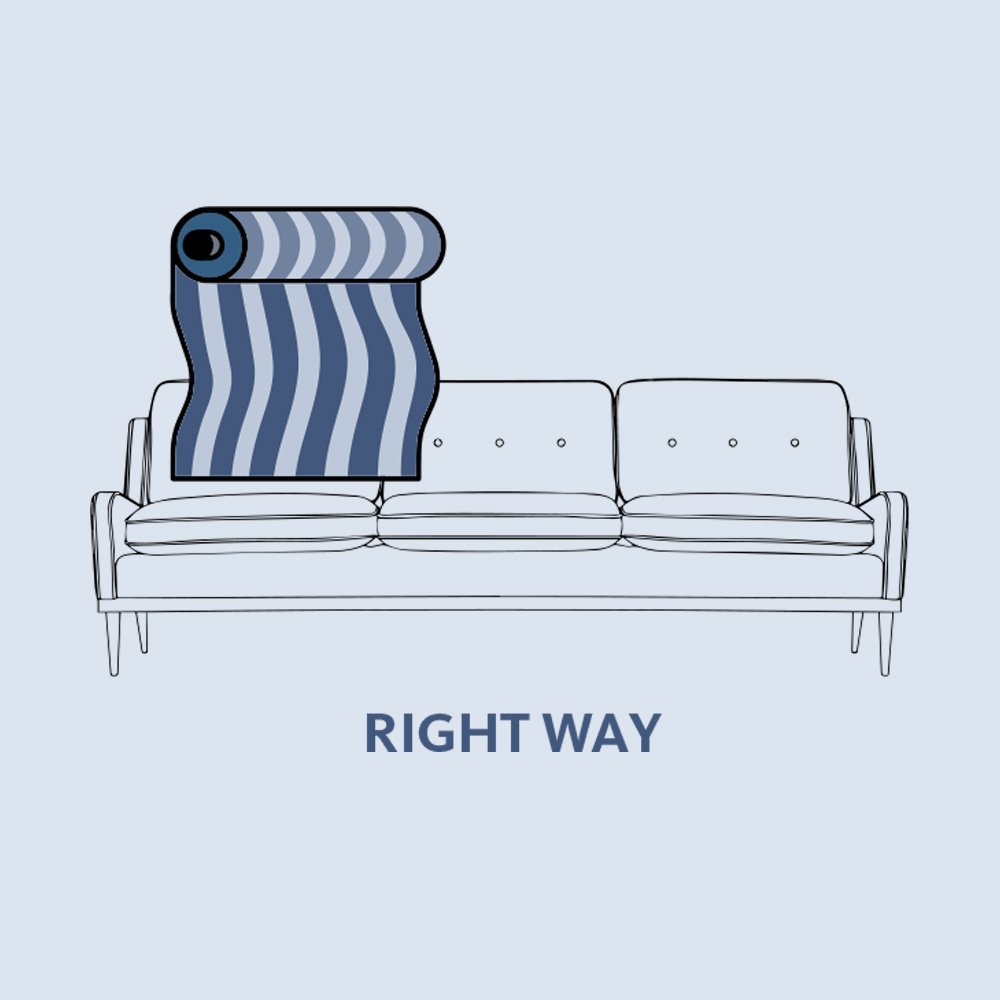
With any COM fabric, you’ll need to specify how you want the fabric bolt to be applied to your furniture. Most clients will say “Apply the right way”. In this case, we’ll apply the fabric in a top-to-bottom direction (see right).
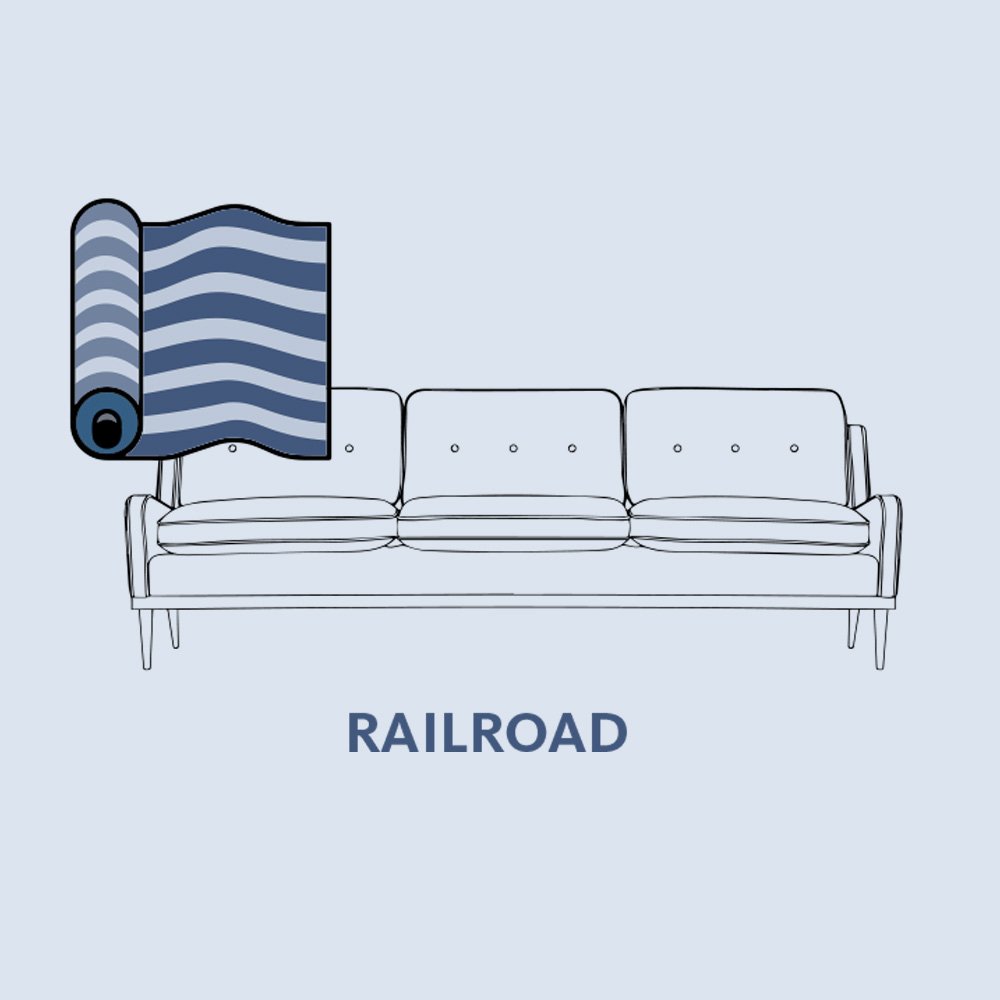
Sometimes a client wants a more unusual upholstered look and will ask to have the pattern “railroaded.” Stripes are a good example of a railroad pattern, but, in general, railroad patterns are much less common. To apply railroaded, we’ll turn the roll and apply the fabric lengthwise. This technique works best when the fabric is applied across wide areas, such as the back span of a sofa, as it minimizes the number of seams needed to cover the distance.

Be sure to ask the textile supplier to ship “uncut rolled goods”; this will prevent your receiving offcuts of different lengths that meet the yardage requirements but may consist of random lengths. These most likely won’t fit our pattern templates, and we won’t be able to use that perfect fabric you’ve chosen for your restaurant chair, outdoor chair, or outdoor sofa! If you’re ever unsure about what to ask for when communicating with your textile supplier, give us a call and we’ll walk you through it.
Calculating additional yardage for pattern repeats can be tricky and lead to expensive mistakes, so don’t hesitate to get in touch if you have any questions. We’re happy to help you determine the right amount of fabric for our furniture in your design.
NOTE: All orders using COM fabrics must be submitted with a completed COM Fabric Form. Please submit one form form for each COM fabric.